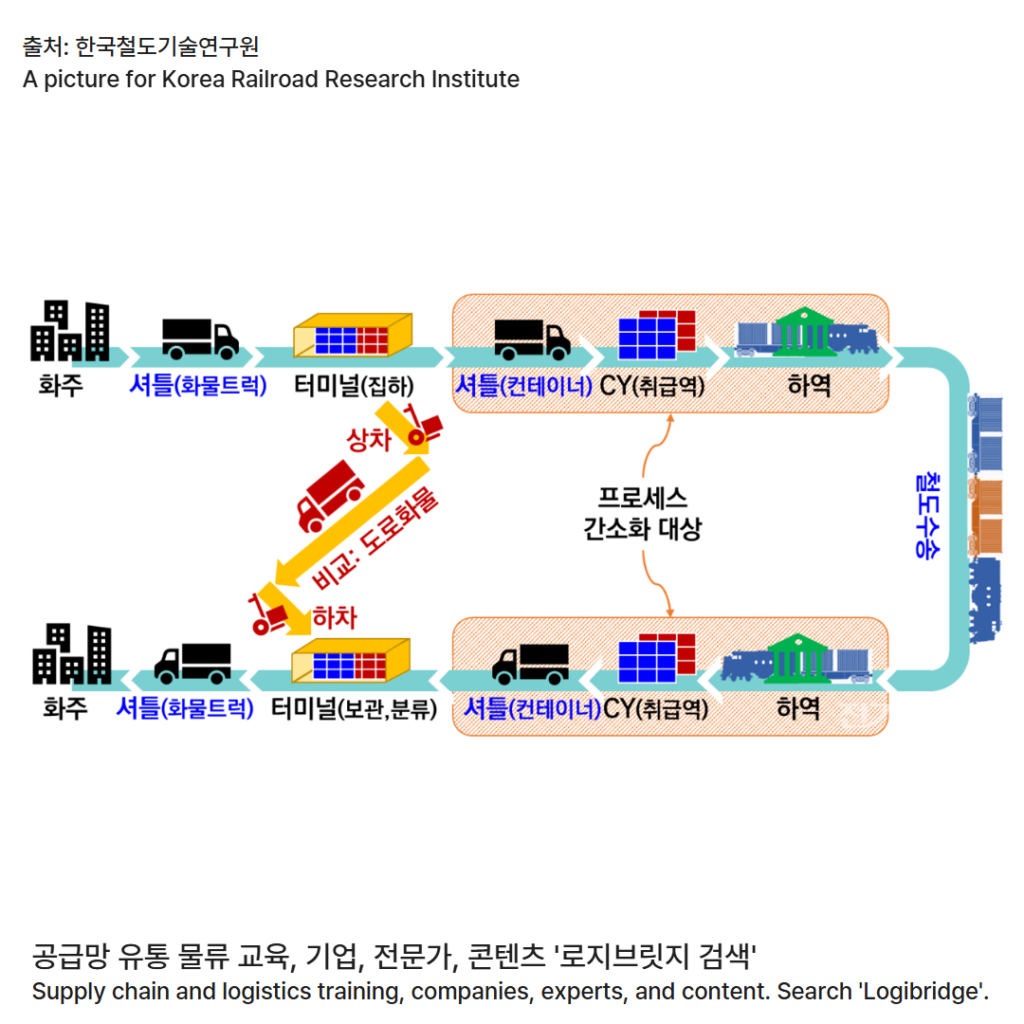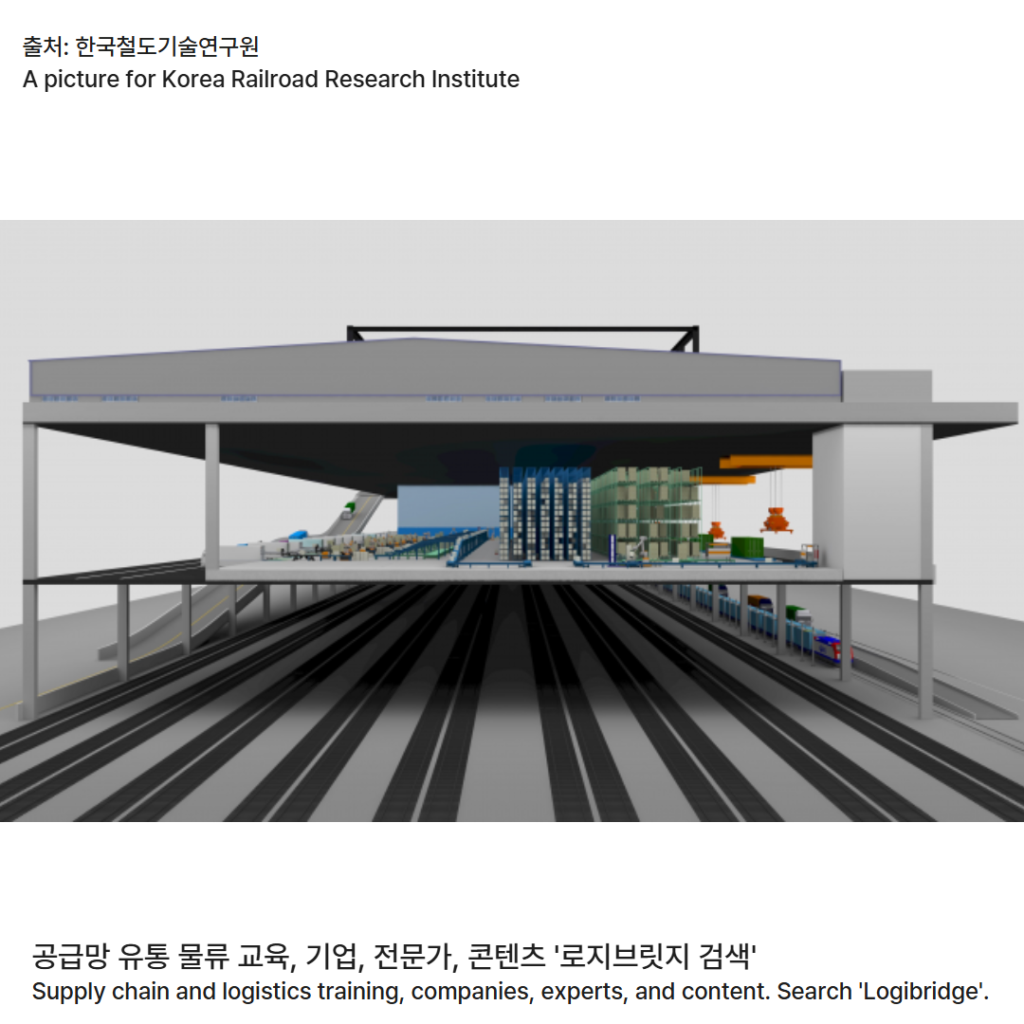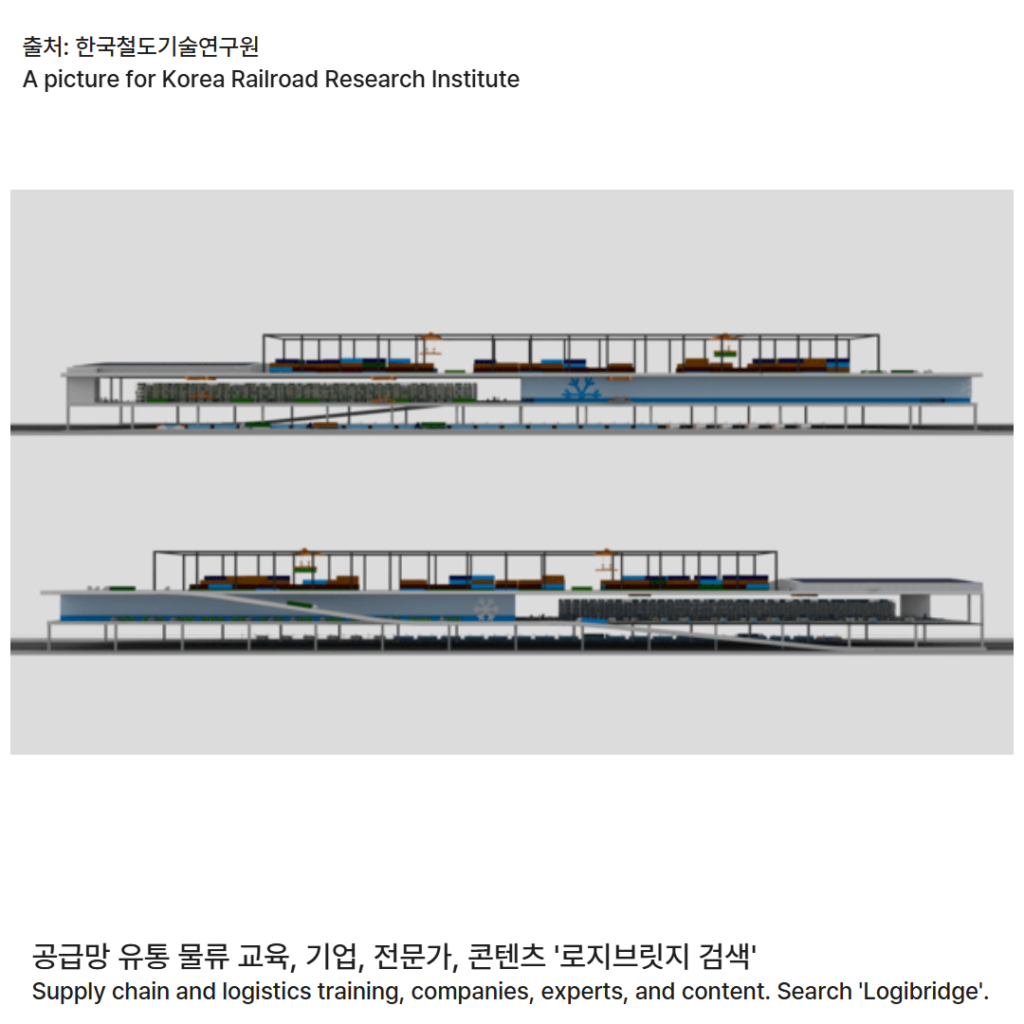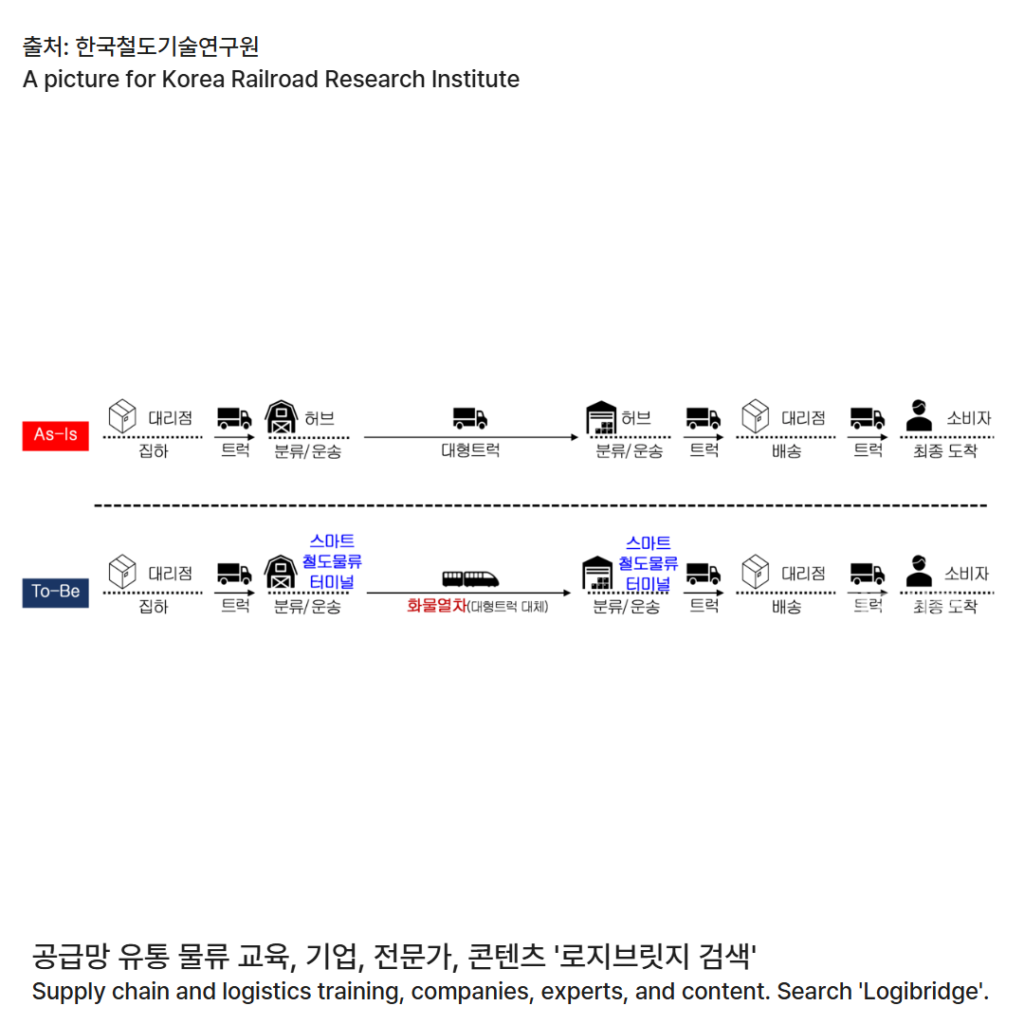Korea Railroad Research Institute (KRRI) has unveiled its Smart Rail Logistics Terminal, a groundbreaking model that transforms urban rail spaces into next-generation logistics infrastructure. This innovation aims to combine efficiency, sustainability, and automation in city logistics.

Smart Logistics Hubs Built on Railway Land
KRRI’s new model utilizes existing rail tracks and nearby spaces to integrate rail transport and road delivery into a single logistics framework.
By optimizing limited urban land and embedding automation, the system aims to ease congestion and improve last-mile efficiency across metropolitan regions.

Core Technologies: Automation and Electrification
The Smart Rail Logistics Terminal includes:
- Indoor movable catenary lines enabling electric locomotives to reach cargo zones
- Overhead cranes for automatic container transfers
- Autonomous Guided Vehicles (AGVs) linking trains and trucks seamlessly
This design replaces diesel engines with electric locomotives, marking a major step toward green logistics operations.

Reclaiming Rail Competitiveness
KRRI expects the model to revitalize short-distance freight transport by significantly reducing handling time and operational costs.
A pilot project in Seoul Metropolitan Area is scheduled for 2026, paving the way for large-scale adoption and commercialization.

A Vision for Publicly Visible Innovation
KRRI officials emphasized their goal to make logistics innovation tangible for citizens, positioning rail freight as a key driver of Korea’s national logistics competitiveness and sustainability.
